Toledo (Castile)
By far the nicest map ever of Toledo. This picture was taken 400 years ago, or was it yesterday?
Detail
Date of first edition: 1596
Date of this edition: 1596
Dimensions (not including margins): 37,5 x 50,5 cm
Dimensions (including margins): 41 x 53 cm
Condition: excellent. Sharp copper engraving printed on paper. Original coloured. Wide margins. Verso top margin traces of previous framing.
Condition rating: A+
Verso: text in Latin
Map reference: van der Krogt 4, 4352, 41B1, state 1; Taschen, Br. Hog., p.367.
From: Civitatis Urbis Terrarum (V: Urbium Praeipuarum Mundi Theatrum Quintum Auctore Georgio Braunio Agrippinate), first published 1596, this edition 1596, Köln. Van der Krogt IV, 2(1), 41:1-3
Toledo commented by Braun (on verso)
” Toledo has already been described in the first volume of this atlas. In this plate, in addition to the plan of the city, the main or cathedral church and the royal palace are clearly illustrated […]. I can say nothing firm about the founder of the city of Toledo, although some claim it was built by Hercules.”
Taschen on Toledo
This detailed depiction of Toledo serves as a complement to the plate in Volume I. The two illustrations are very alike, something not usually the case with repeat views in the Civitates orbis terrarum and which may be explained by the fact that they both go back to the same original. Particular focus thereby falls upon the city’s two prominent buidings, the cathedral and the Alcazar. On the instructions of Archbishop Jiménez de Rada, the vast Gothic cathedral of Santa Maria was commenced around 1493. The Alcazar goes back to a Roman complex. It was renovated in the 16th century under Charles V, who used the palace as an official residence on numerous occasions. Legend claims that the city was founded by Hercules, but Braun doubts this in both of his accompanying texts and offers alternative suggestions: in Volume I he states that Toledo was founded by the Roman consuls Telemon and Brutus, as recorded by L. Marinaeus Siculus and Tarapha. Strangely, in the present volume he claims not to know where he read this.
 Toledo, surrounded by the Tago River.
Toledo, surrounded by the Tago River.
Related items
-
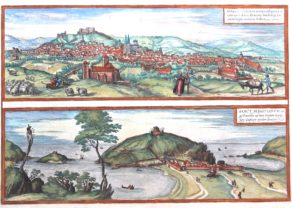
Burgos and San Sebastian
by Georg Braun and Frans HogenbergPrice (without VAT, possibly to be added): €600,00 / $666,00 / £534,00 -

Antequera (Andalusia)
by Georg Braun and Frans HogenbergPrice (without VAT, possibly to be added): €475,00 / $527,25 / £422,75 -
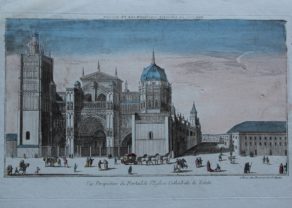
Toledo, cathedral – Vüe perpective du portail de l’Eglise Cathedrale de Tolede
by François DaumontPrice (without VAT, possibly to be added): €450,00 / $499,50 / £400,50
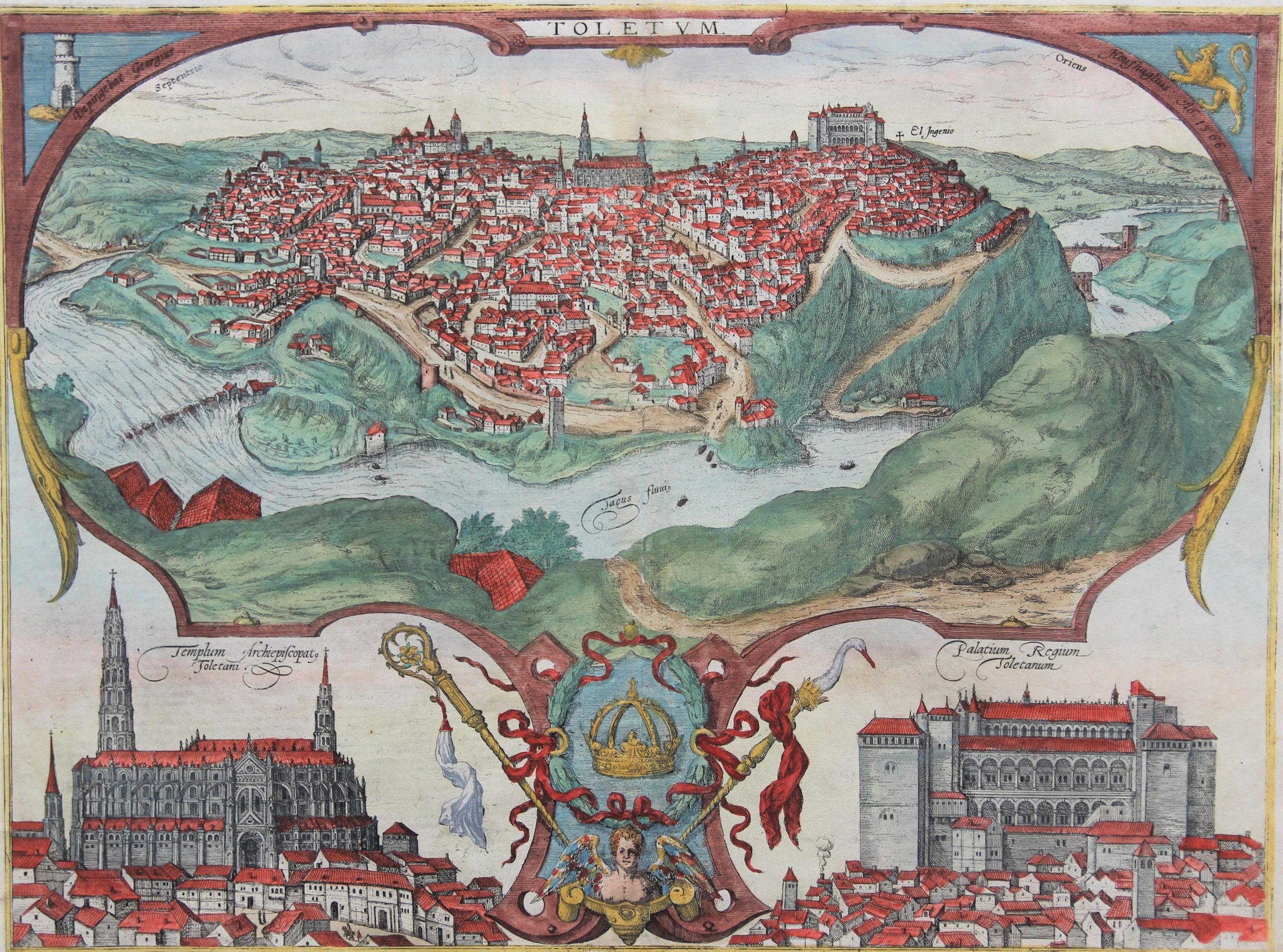
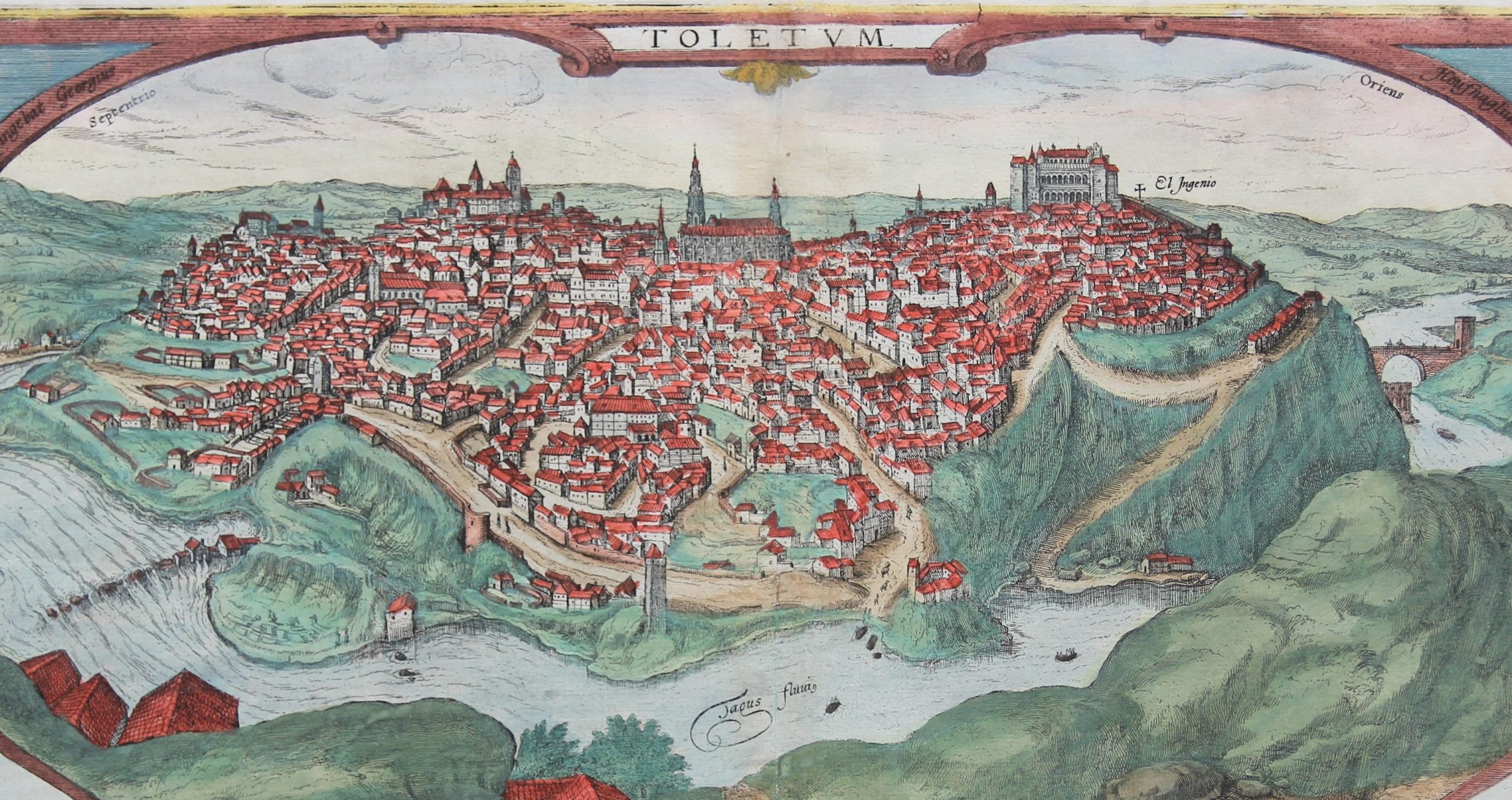
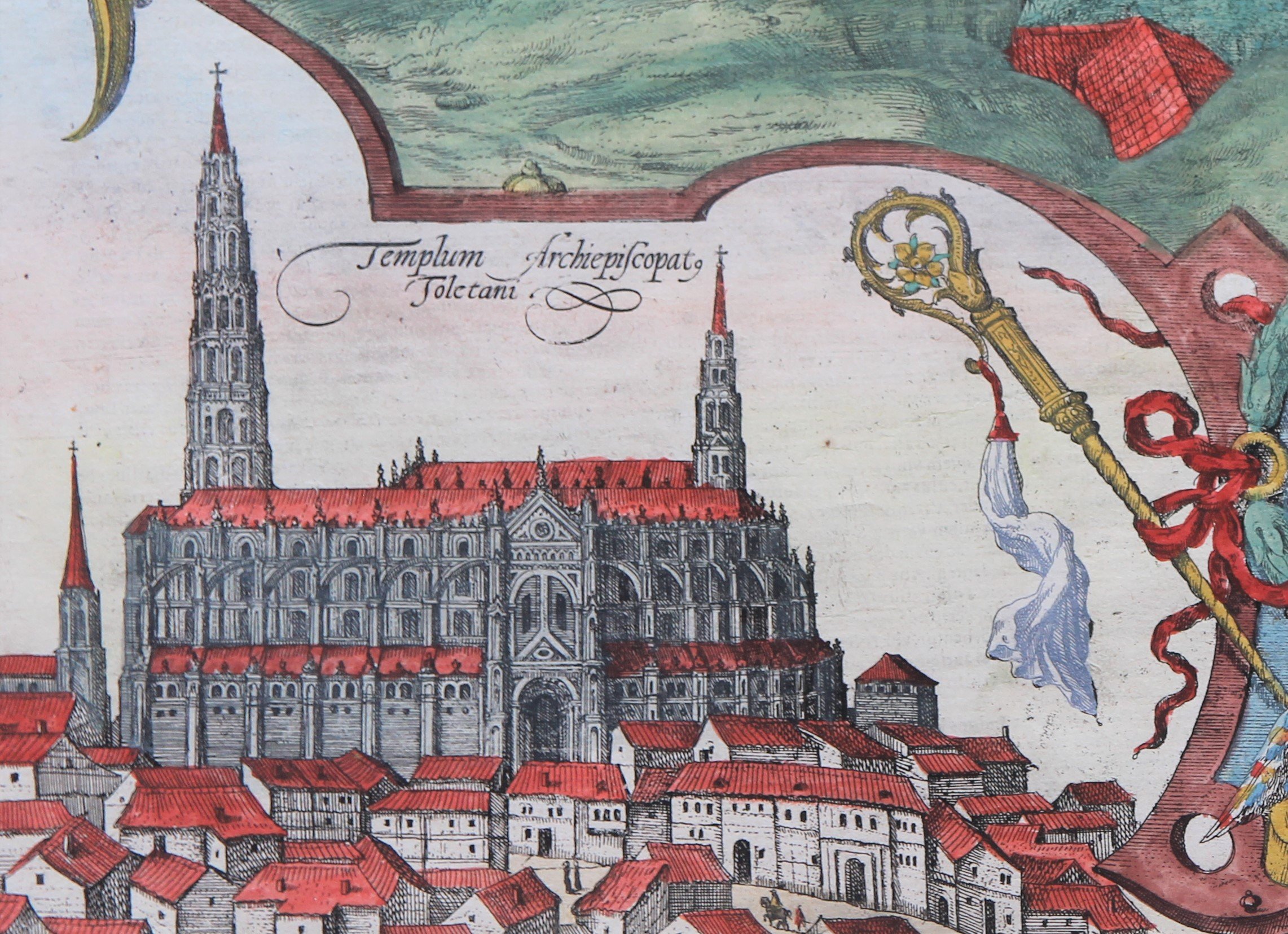
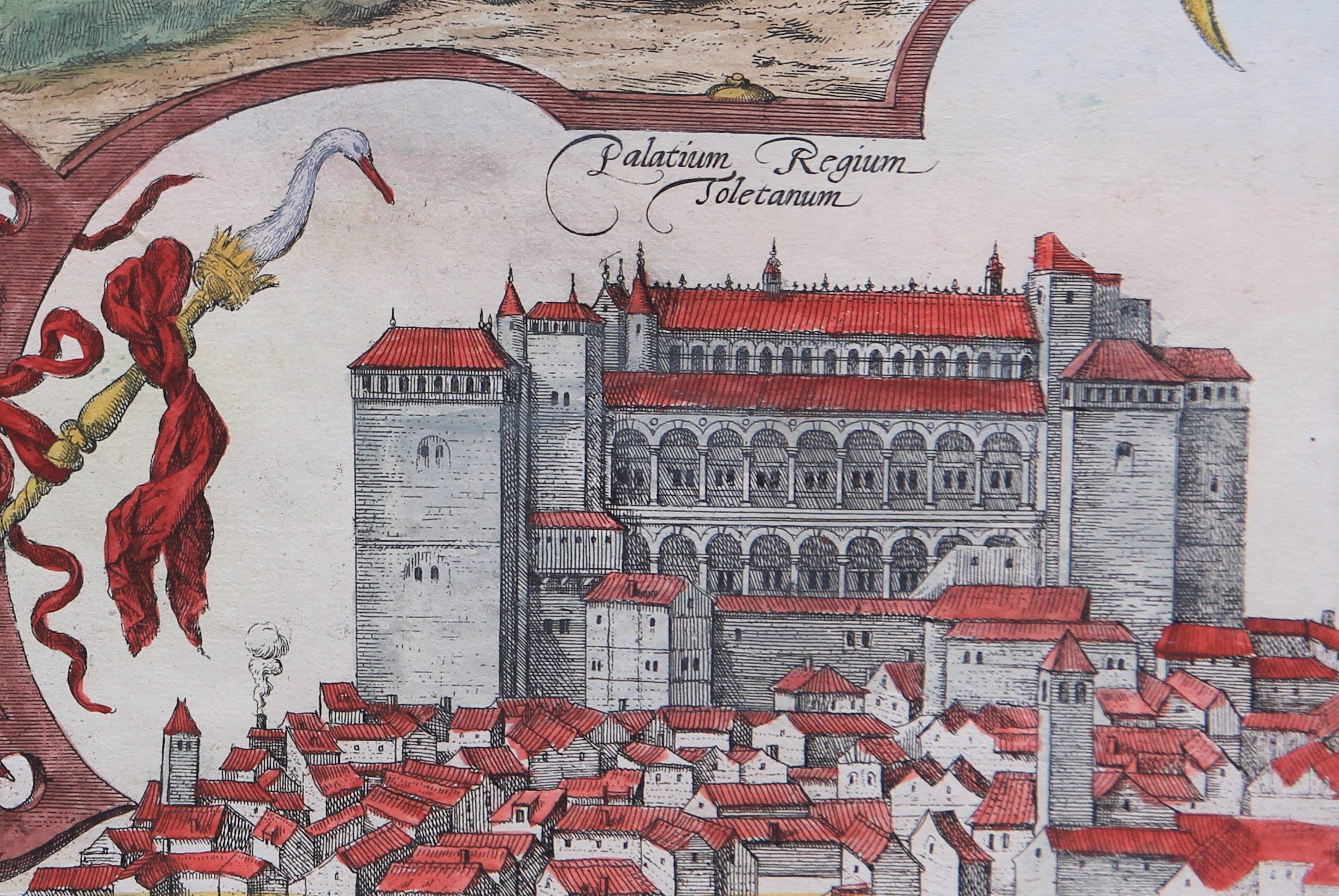
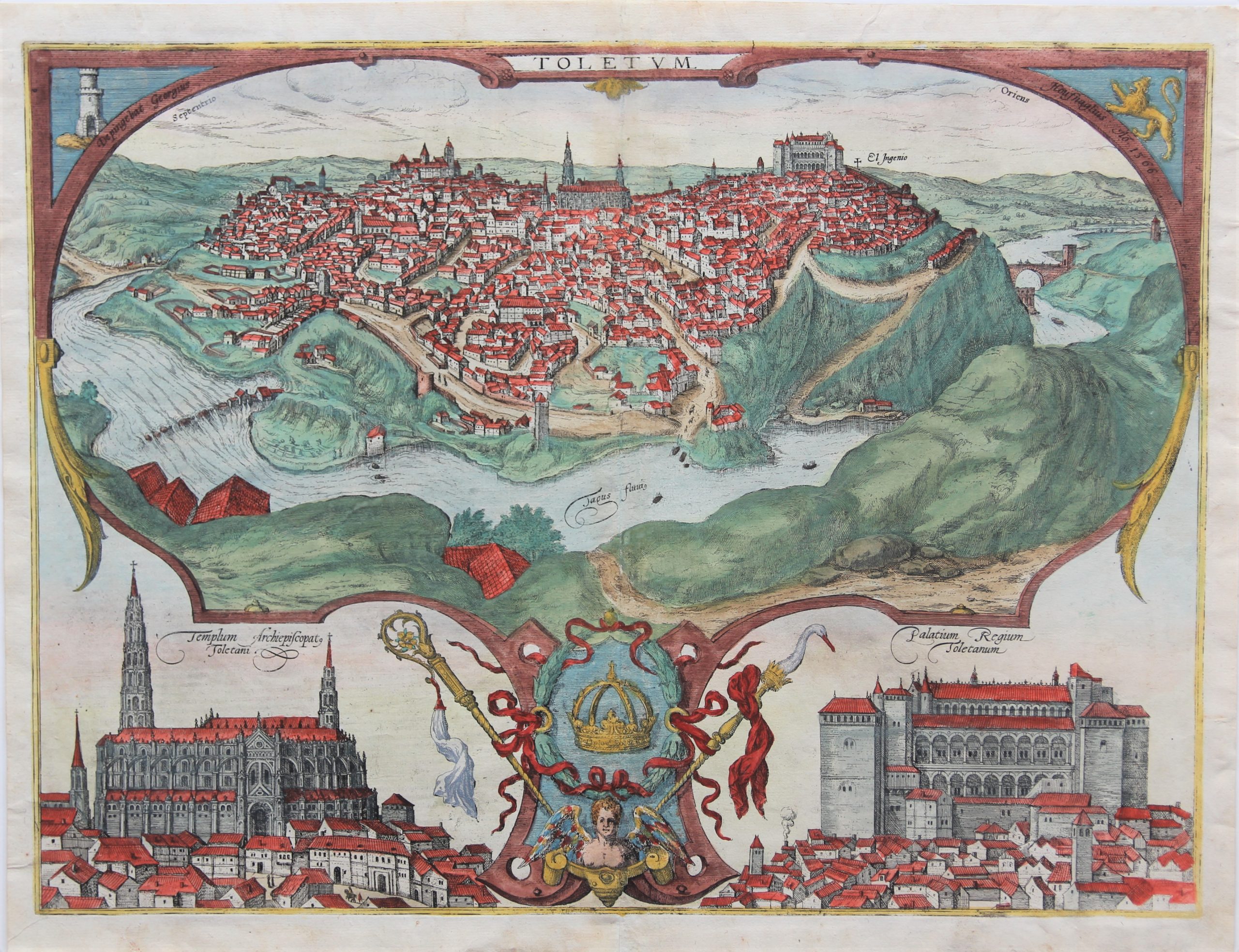
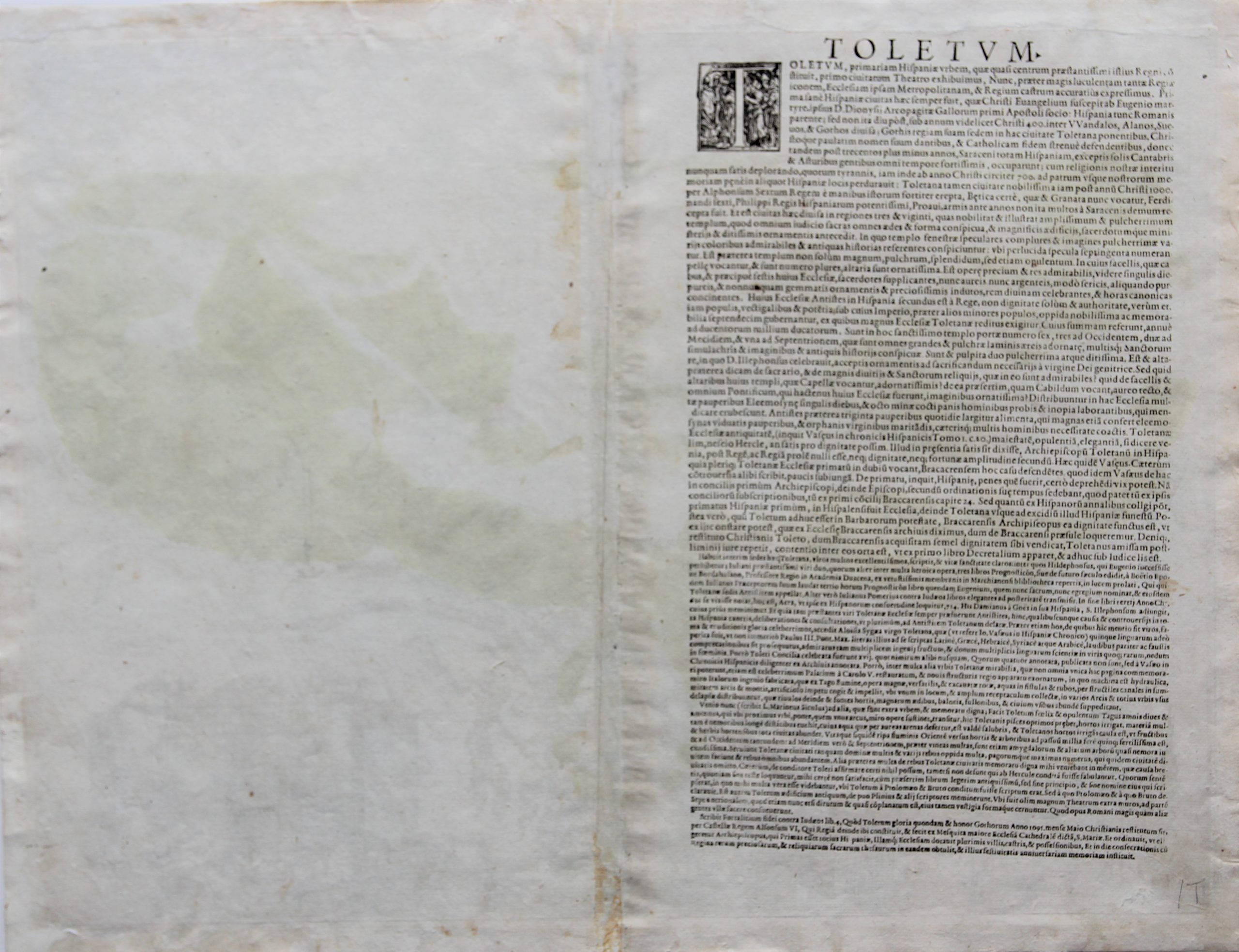
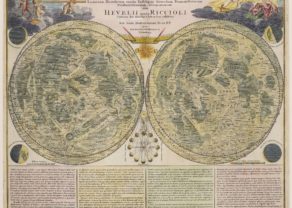
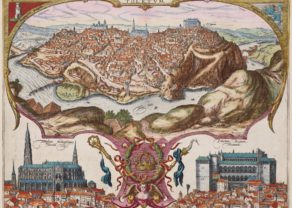
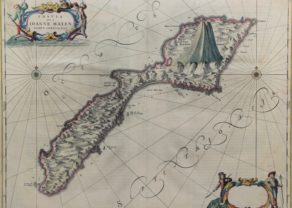
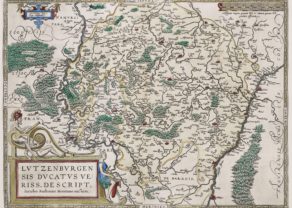
Hogenberg’s Toledo in today’s view
According to a general medieval custom the Spanish Court was an itinerant court. By rotating from place to place the King could control the obedience of the local nobles. So, during the late Middle Ages the Court frequently stayed in Toledo. However, after the end of the Reconquista (closed with the fall of Granada on January 2, 1492), Seville had become the favored royal city in the 16th century. In comparison/perspective, the huge world atlas by Braun and Hogenberg contained three views of Seville (which is an exceptional number) and two of Toledo, but none of… Madrid.
Toledo, on a rocky hill some 100 meters above the winding river Tagus, had been recaptured on the Moors by Alfonso VI of Castile in 1085. This recapture of centrally situated Toledo would signal a strategic shift of the balance of power on the peninsula. For a long time it was the spiritual and cultural capital of Castile (and afterwards of Spain), also thanks to its ideal natural defense as it is enclosed and three sides and secured by the river.
The huge Cathedral was founded on a mosque and its eternal construction is situated between 1226 and 1493. Even now, Toledo is one of the 14 Spanish archdioceses. More so, it is, in addition to Compostela, the only Spanish Primate (compare to the ecclesiastical positions of York and Canterbury in England).
On the River Tagus: The Tagus is the longest river in the Iberian Peninsula. It is 1,007 km (626 mi) long, 716 km (445 mi) in Spain, 47 km (29 mi) along the border between Portugal and Spain and 275 km (171 mi) in Portugal, where it empties into the Atlantic Ocean near Lisbon. Thus, it links Toledo to Lisbon!